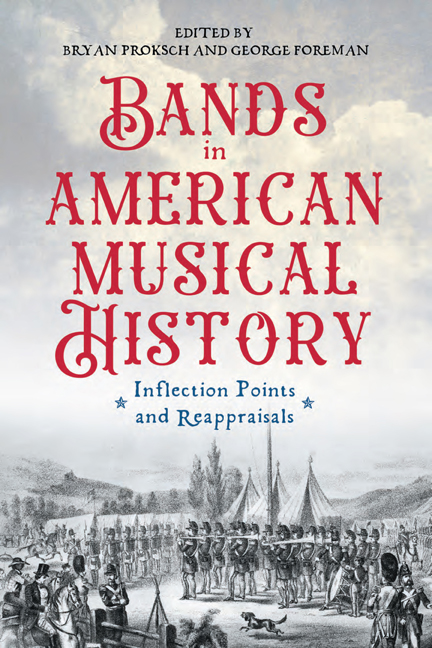3 - From Gilmore to Sousa: How One Legendary Bandmaster Gave Rise to Another
Published online by Cambridge University Press: 11 May 2024
Summary
It was billed as a “musical event extraordinary” featuring “a Military Band without a rival,” albeit one that had never performed in public before. On the night of the concert, John Philip Sousa mounted the podium and faced his newly formed band of “fifty of the highest class artists and soloists.” Instead of opening with the first number on the program, the overture from Rossini's Semiramide, the men rose to their feet and played the somber strains of P. S. Gilmore's The Voice of a Departing Soul (1861). Originally an aria for bass, the lyrics declared with alarm, “Death's at the door! Keep him at bay! He's dress’d in deep black! To take me away!”
The “event extraordinary” at Stillman Music Hall in Plainfield, New Jersey, on September 26, 1892, was the highly anticipated debut of Sousa's New Marine Band, but the audience was understandably subdued. Two days earlier, while at the St. Louis Exposition with his band of one hundred, Gilmore, “the world's greatest bandmaster,” died unexpectedly in his hotel room. Upon hearing the stunning news, Sousa hurriedly wrote a band arrangement of Gilmore's song and made the last-minute change to his program. The day after the concert, the Plainfield Press reported that the performance of Gilmore's dirge “was intended as a tribute to the memory of the most distinguished band leader of this century.” Even before the downbeat of that mournful elegy at least one newspaper had already declared that, with the passing of Gilmore, Sousa was “now the greatest bandmaster in the country.”
An examination of the careers of these two musical giants during the period from 1885 to 1893 sheds new light on the various circumstances that converged for Gilmore to set the stage for Sousa's rapid ascendancy. These included Gilmore's successful but ultimately tenuous relationship with David Blakely (1834–96), his general manager, who went on to launch Sousa's Band; specific artistic and logistical clashes that led to the dissolution of Gilmore's profitable relationship with Blakely; Blakely's determination to engage a younger bandmaster who would rival Gilmore and prove to be even more lucrative as a business venture; and finally, Gilmore's sudden death.
- Type
- Chapter
- Information
- Bands in American Musical HistoryInflection Points and Reappraisals, pp. 97 - 120Publisher: Boydell & BrewerPrint publication year: 2024



